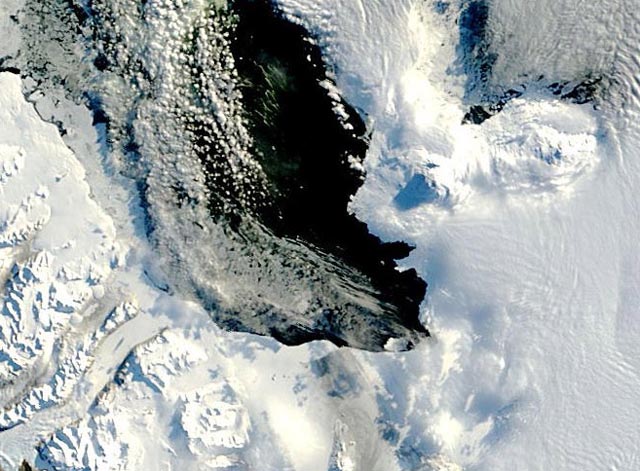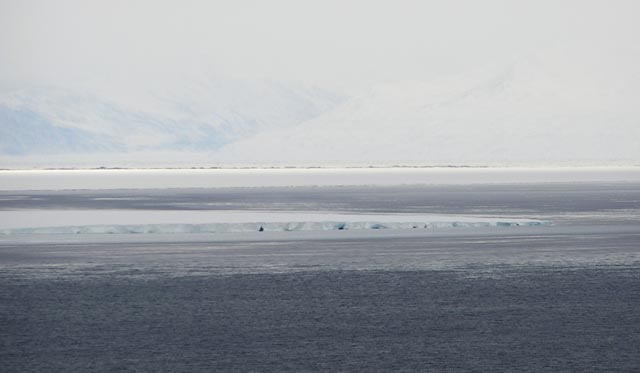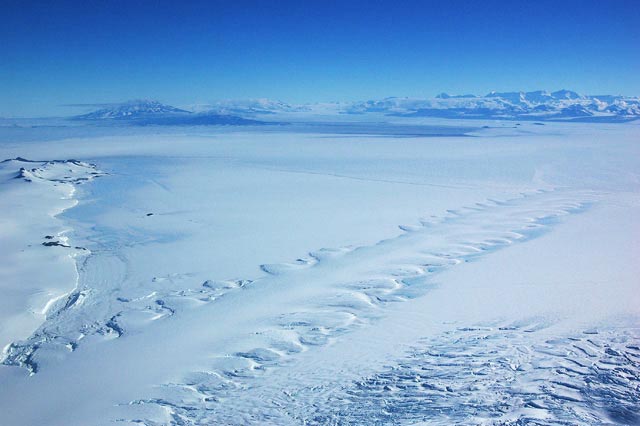|
Tip of the tongueLarge iceberg calves off Erebus glacier into McMurdo SoundPosted March 8, 2013
A large iceberg broke off from the Erebus Ice Tongue at the end of February. The iceberg is currently floating in McMurdo Sound where the U.S. Antarctic Program’s McMurdo Station However, there is a small risk to operations next summer season if the massive iceberg freezes close to the island when the sea ice forms in the winter, according to Al Martin, McMurdo area manager for the USAP. Each year a temporary airfield is set up on the sea ice near McMurdo Station. Researchers also do work on the sea ice, from studying Weddell seals to collecting snow samples for chemical analyses. Paul Morin New Zealand scientists reported in local media that the iceberg will likely drift to the other side of McMurdo Sound based on previous calving events. 
Photo Credit: NASA LANCE-MODIS and Polar Geospatial Center
Satellite view of McMurdo Sound on March 4, 2013. The iceberg is near the bottom of the image.
There were three recorded calving events in the 20th century. The first occasion was witnessed by members of Robert F. Scott’s Terra Nova expedition Historically, Erebus Ice Tongue protrudes more than 10 kilometers into McMurdo Sound. An ice tongue usually forms when a valley glacier moves very quickly into a lake or ocean. In this case, the ice tongue is fed from the western slope of Mount Erebus, an active volcano on Ross Island. The thin glacier is protected from the open waters of the Ross Sea to the north by Cape Royds. Photos of the iceberg shot from McMurdo Station appear to show several ice caves. News reports estimated the iceberg to carry about 15 million tons of ice, though those estimates were based on more conservative calculations of the berg’s size. |



For USAP Participants |
For The Public |
For Researchers and EducatorsContact UsU.S. National Science FoundationOffice of Polar Programs Geosciences Directorate 2415 Eisenhower Avenue, Suite W7100 Alexandria, VA 22314 Sign up for the NSF Office of Polar Programs newsletter and events. Feedback Form |



